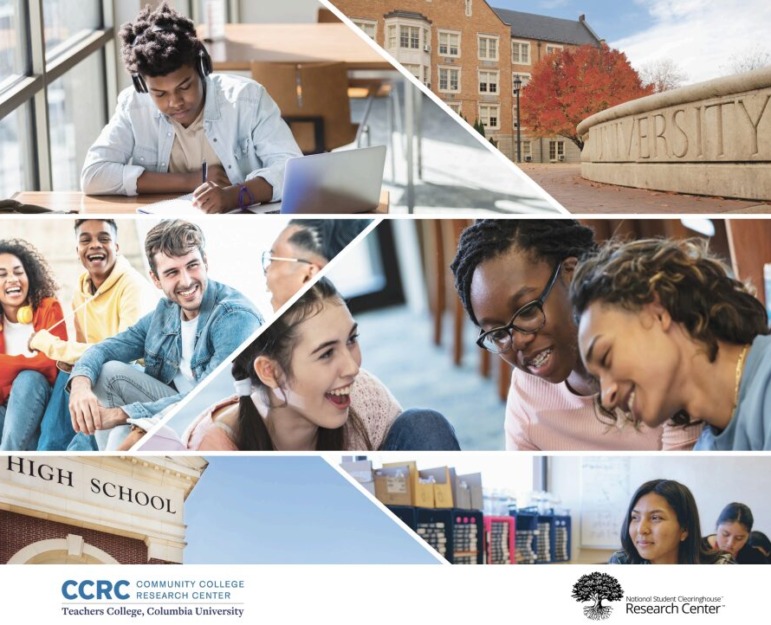
Courtesy Community College Research Center
Collage from the report cover for The Postsecondary Outcomes of High School Dual Enrollment Students A National and State-by-State Analysis.
Source
Community College Research Center, Columbia University
Summary
Using National Student Clearinghouse (NSC) data, this report presents national and state-by-state findings on the postsecondary enrollment and completion outcomes of high school students who began taking dual enrollment college courses in fall 2015, tracked for four years after high school. We describe the size and significance of the dual enrollment population for postsecondary institutions and states and compare postsecondary outcomes among dual enrollees to outcomes of other recent high school graduates entering higher education without prior dual enrollment experience.
Given previous research indicating that low income, Black, and Hispanic high school students are severely underrepresented in dual enrollment coursework, we further disaggregate results for these subgroups to highlight the potential for dual enrollment to strengthen high-school-to-college-and-career transitions and increase equity for underserved communities.
State Findings: Dual Enrollment Student Outcomes Dashboard
The accompanying data dashboard displays state-by-state results from the 2024 report, broken down by student racial/ethnic group, neighborhood income, and gender. The data allow states to assess how well their dual enrollment programs are helping students gain a head start on college compared to other states and the nation overall.
Key Findings
-
- High school dual enrollment is widespread and growing across states; it is especially prevalent at community colleges.
- Dual enrollment students have strong postsecondary outcomes after high school, particularly in some states.
- Low-income, Black, and Hispanic students are underrepresented in dual enrollment and have lower average award completion rates than dual enrollment students overall. However, among low-income, Black, and Hispanic students, dual enrollees’ award completion is still stronger than that of nondual enrollees.
- High school students who take dual enrollment at a four-year institution do particularly well in college but are not as diverse as other dual enrollment students in terms of race/ ethnicity and income.
- For community colleges, former dual enrollment students are a strong source of post high-school enrollments.
Key Implications for Practice and Policy
-
- Broaden the benefits of dual enrollment.
- Help dual enrollment students complete college in a timely fashion.
- Examine outcomes across different state and local contexts.
[Related: Tracking college closures]
View Youth Today's Report Library



























